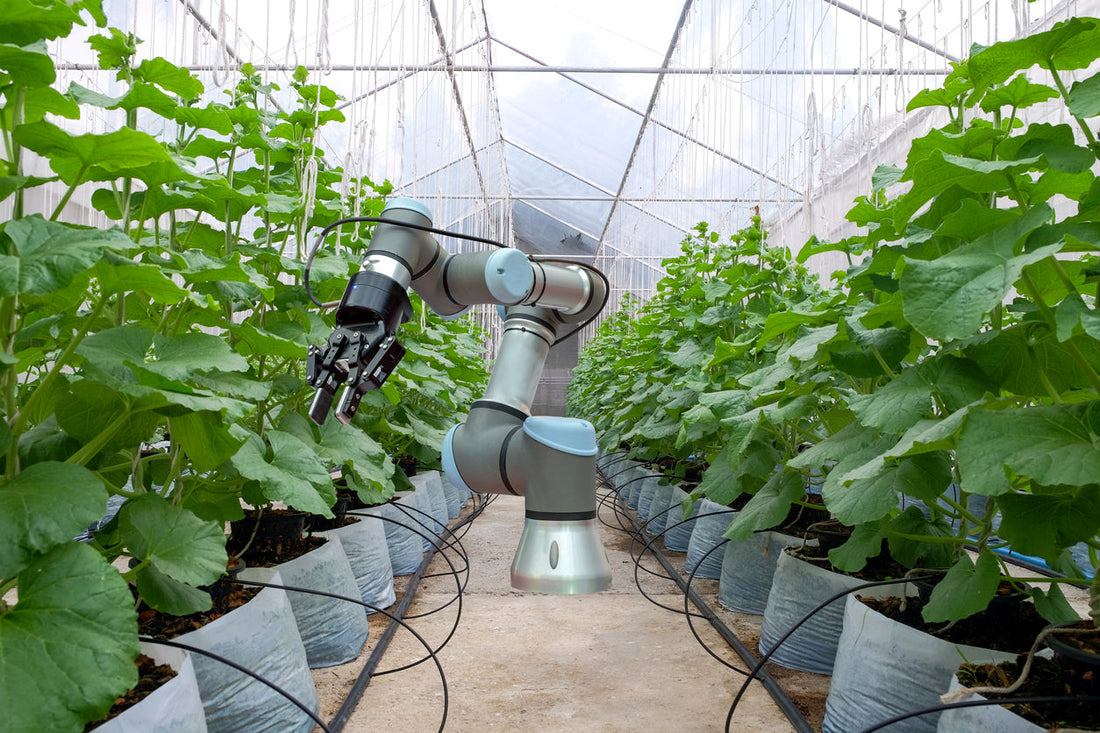
Smart Farming with Agriculture Robots Market: The Future of Agriculture is Here
Share

Introduction
As the world’s population continues to grow, the demand for food production is higher than ever. The agricultural industry is facing immense pressure to meet these needs while also addressing labor shortages, increasing environmental concerns, and the demand for more sustainable practices. Enter agriculture robots, or agribots—the cutting-edge technology transforming how we cultivate crops, raise livestock, and manage resources.
Agriculture robots offer an exciting solution to these challenges, helping farmers optimize productivity, reduce operational costs, and improve sustainability. For investors, the agribot market presents a unique opportunity to tap into a rapidly growing sector that’s poised for substantial growth in the coming years. Let’s explore how these advanced machines are revolutionizing the agricultural landscape and why now is the time to invest.
The Rise of Agriculture Robots: Transforming Traditional Farming
Agriculture robots are machines designed to perform tasks on farms autonomously or semi-autonomously, ranging from small drones to large tractors. These innovations aim to improve efficiency and address key challenges in the agricultural industry, such as labor shortages, resource optimization, and environmental sustainability. With tasks like planting, harvesting, weeding, and spraying increasingly automated, agribots are becoming indispensable in modern farming.
For investors, the agribot market presents a tremendous opportunity to invest in a sector that promises long-term growth. As more farmers adopt these technologies, the potential for scalable, cost-effective farming solutions expands, making it a lucrative space to watch.
Diverse Applications: Types of Agriculture Robots Revolutionizing Farming
The wide variety of agriculture robots available today demonstrates the versatility of these systems. Each type of agribot is designed for specific farming applications, from automating routine tasks to enhancing precision farming practices. Some of the key types include:
- Autonomous Tractors: Self-driving tractors equipped with GPS and sensors enable farmers to till, plant, and harvest crops with minimal human intervention, reducing labor costs and improving efficiency.
- Milking Robots: On dairy farms, robotic milking systems automate the milking process, improving efficiency and animal welfare while reducing labor costs.
- Drones (Unmanned Aerial Vehicles): Drones are increasingly used in agriculture for crop monitoring, mapping, and spraying. They can cover large areas quickly and provide valuable insights for farmers to make better decisions.
- Harvesting Robots: These robots use advanced sensors and cameras to detect ripe crops, allowing for autonomous harvesting of fruits, vegetables, and grains.
- Weed Control Robots: With the ability to use mechanical tools or targeted herbicide spraying, these robots help control weeds with minimal environmental impact.
- Soil Sampling Robots: These robots collect soil samples for analysis, helping farmers make data-driven decisions about crop health and nutrient management.
- Crop Monitoring Robots: Equipped with sensors to monitor temperature, humidity, and soil moisture, these robots help optimize irrigation and fertilization practices.
- Livestock Monitoring Robots: These robots track the health and well-being of livestock, contributing to better farm management and animal care.
How Advanced Technologies Are Impacting Agriculture Robots
The agribot industry is experiencing rapid growth, fueled by advancements in various technologies that are continuously improving the capabilities of these machines. Here are some of the key innovations driving the future of agriculture robots:
- Artificial Intelligence & Machine Learning: AI enables agribots to make real-time decisions based on data, such as detecting weeds with greater precision or predicting crop yields based on weather and soil conditions. Machine learning also allows agribots to improve their efficiency over time, making them smarter and more effective.
- Precision Agriculture: Agribots are at the heart of precision farming, enabling practices like variable-rate seeding and fertilization. By leveraging sensors, GPS mapping, and drones, agribots optimize resource usage and enhance crop yields, leading to higher efficiency and reduced waste.
- 3D Printing: 3D printing is being used to create custom components for agribots, making them more cost-effective and tailored to specific farming needs.
- Autonomous Electric Vehicles (AEVs): AEVs are revolutionizing agriculture by reducing reliance on fossil-fuel-powered machinery. These self-driving, electric-powered machines can operate without human intervention, improving sustainability and reducing operational costs.
- Microbots: The potential of microbots—small, swarm-like robots that can handle tasks such as pollination and soil monitoring—is groundbreaking. These robots could revolutionize crop management, offering new ways to address issues like pests, disease, and drought.
The Competitive Landscape: Investment Opportunities in Agriculture Robots
As the agriculture robot market grows, numerous companies are stepping up to meet the demand for advanced farming technologies. Leading companies in this space are enhancing their market positions through new product introductions, partnerships, acquisitions, and technological innovations. Some of the key players include major robotics manufacturers, precision agriculture startups, and established agricultural technology firms.
For investors, these companies represent exciting opportunities to participate in a rapidly expanding market. With agriculture robots becoming more sophisticated, affordable, and accessible, the industry is set for exponential growth in the coming years. By investing in agriculture robotics today, stakeholders can tap into the future of farming—an industry that’s evolving to meet global food production demands sustainably and efficiently.
Why Now Is the Time to Invest in Agriculture Robots
The agriculture robot market is expected to experience significant growth, driven by the increasing adoption of precision farming, automation, and sustainability practices. As agribots continue to evolve and become more integrated into mainstream farming operations, the potential for market expansion is vast.
For investors looking to enter a high-growth, high-impact sector, agriculture robots offer a promising opportunity. The ongoing advancements in AI, machine learning, and autonomous technology make this a dynamic and lucrative space to be a part of. With the global push for sustainable agriculture practices, agribots are positioned to play a central role in the future of farming.